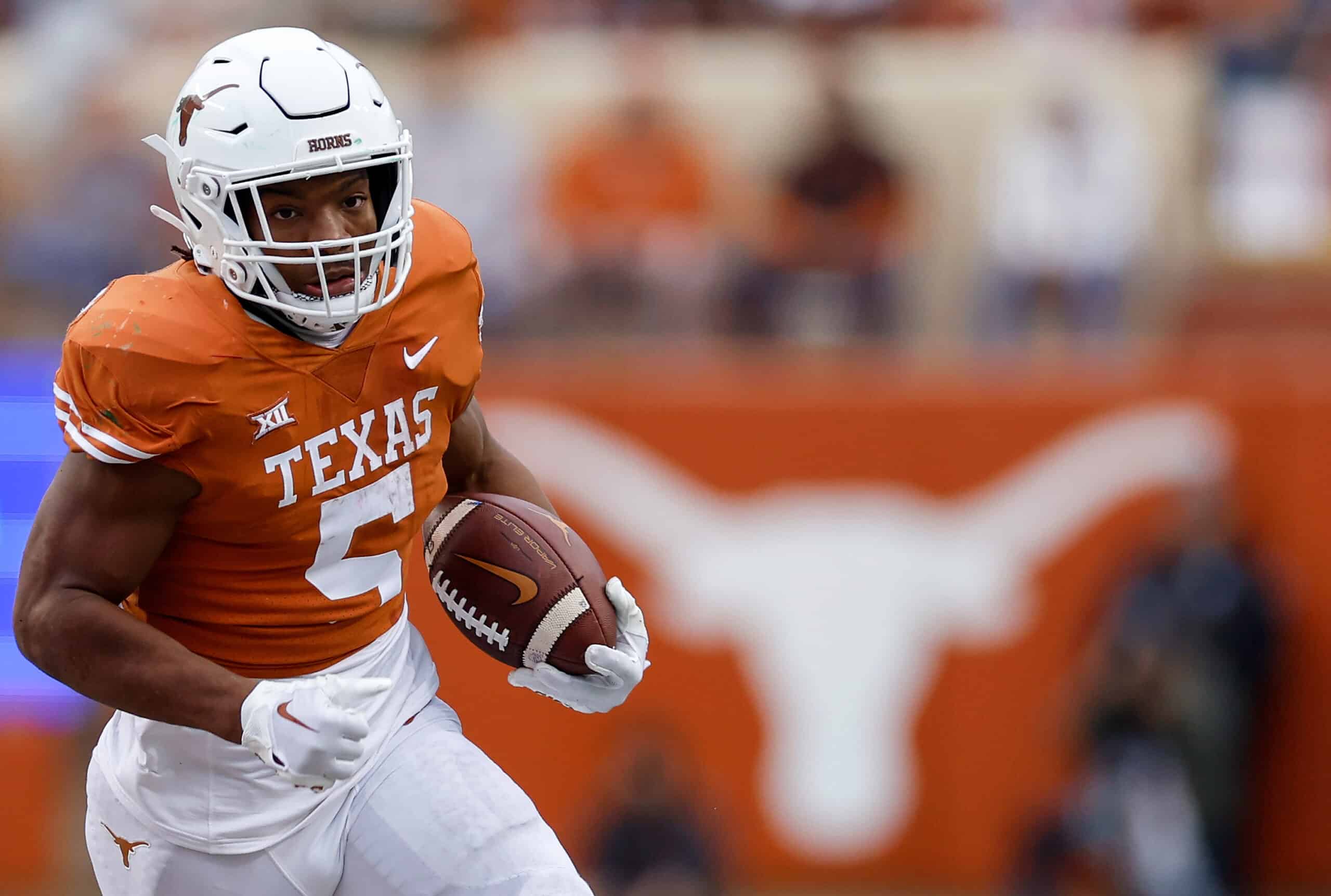ADP vs. RBS
In the realm of fantasy football, drafting the right players is paramount to achieving success. Two key metrics that guide fantasy managers in their draft decisions are Average Draft Position (ADP) and Real-Time Best (RBS). Understanding the differences between these metrics is crucial for making informed decisions that can tip the scales in your favor.
ADP: A Reflection of Consensus
Average Draft Position (ADP) represents the average draft position of a player across a large sample of fantasy drafts. It reflects the collective wisdom of the fantasy community, offering insights into how players are generally valued. ADP is calculated by analyzing draft data from various sources, such as online platforms and fantasy leagues.
RBS: A Dynamic Viewpoint
Real-Time Best (RBS) provides a dynamic and real-time assessment of a player’s value based on their current performance and projected future contributions. It is not simply a static number but rather a constantly evolving metric that adapts to changing circumstances. RBS is calculated using algorithms that consider factors such as recent performance, schedule, injuries, and other relevant data.
Comparing and Contrasting ADP and RBS
ADP and RBS offer different perspectives on player value. ADP provides a historical snapshot of how players are typically drafted, while RBS reflects their current and projected value. ADP is a static metric that is based on historical data, while RBS is a dynamic metric that is constantly evolving.
Advantages and Disadvantages of Using ADP
ADP can be a valuable tool for fantasy managers, offering insights into how players are generally perceived. It can help identify players who are being drafted higher or lower than expected, potentially uncovering value or risk. However, ADP is not without its limitations. It is a historical metric that does not account for recent performance or changes in circumstances.
ADP is a valuable tool for identifying potential value, but it is not a foolproof metric.
Advantages and Disadvantages of Using RBS
RBS offers a more dynamic and real-time assessment of player value, taking into account recent performance and other factors. It can be particularly useful for identifying players who are experiencing a surge in value or those who are facing a decline. However, RBS is based on algorithms and projections, which can be subject to error.
RBS can be a powerful tool for identifying emerging stars, but it is important to consider the inherent uncertainty associated with projections.
Identifying Risk Factors in Fantasy Football: Risk Baked Into Adp Rbs Fantasy Football
While Average Draft Position (ADP) and rankings from reputable sources like Rotoworld or other experts can provide valuable insights, relying solely on them for drafting decisions can lead to unforeseen risks. Understanding these risks is crucial for maximizing your fantasy football success.
Impact of Injuries on Player Value
Injuries are a major factor that can significantly impact a player’s value and disrupt fantasy football plans. Even minor injuries can limit a player’s performance, while severe injuries can sideline them for extended periods.
- Example: In 2023, Christian McCaffrey, a top-ranked running back, missed several games due to injuries, affecting his overall fantasy production and frustrating his owners.
- Example: A season-ending injury to a player like Saquon Barkley in 2020 significantly impacted the fantasy value of the New York Giants’ offense.
Fluctuations in Player Performance, Risk baked into adp rbs fantasy football
Player performance can be unpredictable and subject to significant variations. A player who performs exceptionally well in one season may struggle in the next, making it risky to solely rely on past performance when drafting.
- Example: Quarterback Patrick Mahomes, known for his high scoring potential, had a relatively lower scoring year in 2022 compared to his previous seasons, which might have caught some fantasy owners off guard.
- Example: Running back Dalvin Cook, a consistently high-scoring back, faced several injuries and a decline in performance in 2022, making his fantasy value less predictable.
Team Changes and Impact on Player Value
Team changes, such as coaching staff alterations, trades, or the emergence of new players, can significantly affect a player’s role and fantasy value.
- Example: The trade of wide receiver Davante Adams from the Green Bay Packers to the Las Vegas Raiders in 2022 significantly impacted his fantasy value as he adapted to a new team and offense.
- Example: The arrival of a new offensive coordinator in 2023 for the Carolina Panthers could potentially impact the performance of running back Christian McCaffrey and the overall offensive scheme.
Strategies for Managing Risk

Managing risk in fantasy football is essential for maximizing your chances of winning your league. A well-crafted risk management strategy can help you balance potential upside with downside risk, leading to consistent success throughout the season.
Mitigating Risk During the Draft
A well-defined draft strategy is crucial for mitigating risk during the fantasy football draft. By understanding the risk profiles of players and prioritizing value picks, you can assemble a strong and balanced team.
- Target Players with Consistent Production: Players with a history of consistent performance are generally safer picks, reducing the risk of relying on unpredictable players. Examples include running backs with a proven track record of high-volume touches and wide receivers who have consistently delivered solid fantasy points.
- Prioritize Proven Veterans Over Unproven Rookies: While rookies can offer high upside, their lack of experience makes them riskier picks. Focusing on established veterans with a proven track record in the NFL provides a higher probability of consistent fantasy production.
- Avoid Reaching for Players: Reaching for a player means drafting them earlier than their perceived value based on their risk profile. This can lead to a weaker overall team as you miss out on potentially better players at their actual value.
- Utilize the Late Rounds for High-Upside Players: The later rounds of the draft offer an opportunity to take calculated risks on players with high upside potential. These players might be considered risky due to injury concerns, limited opportunity, or a lack of proven production, but they can offer significant value if they break out.
Balancing Upside with Downside Risk
Balancing potential upside with downside risk is a crucial aspect of fantasy football success. Identifying players with high upside while minimizing downside risk can lead to a winning strategy.
- Draft Players with a High Floor: Players with a high floor are those who are likely to provide a minimum level of production even in unfavorable game scenarios. This consistency reduces the risk of relying on players who might have unpredictable performances.
- Consider Players with a Clear Path to Increased Opportunity: Players with a clear path to increased opportunity, such as a young receiver in a high-powered offense or a running back who is likely to take on a larger role due to an injury or trade, offer significant upside potential. However, their potential upside is also accompanied by a higher level of risk.
- Utilize Trade Strategies to Manage Risk: Trades can be a valuable tool for managing risk in fantasy football. By trading players with high upside but a questionable track record for players with more consistent production, you can balance your roster while maximizing your chances of winning.
Value Picks Based on Risk Profile
Value picks in fantasy football are players who are being drafted later than their perceived value, often due to concerns about their risk profile. These players can offer significant upside potential if they outperform their draft position.
- Example: A wide receiver who is projected to be a WR2 but is being drafted as a WR3 due to concerns about his quarterback situation. If the quarterback performs well, the receiver could exceed his draft position and provide significant value.
Risk baked into adp rbs fantasy football – The risk baked into ADP for running backs in fantasy football often stems from injury concerns, as these players are susceptible to wear and tear. To mitigate this risk, you might consider looking for value in the later rounds, or explore DFS options like those outlined in nfl dfs draftkings cash picks week 16 fantasy football 3.
By diversifying your approach, you can minimize the impact of a single player’s injury on your overall fantasy season.
The risk baked into ADP RBs in fantasy football is a gamble, like buying a baby doll potty chair for a toddler – you hope it’s a good investment, but there’s always a chance they’ll grow out of it before it’s even used.
The same goes for those high-priced running backs, as a single injury can derail their entire season, leaving you with a hefty price tag and a depleted roster.
